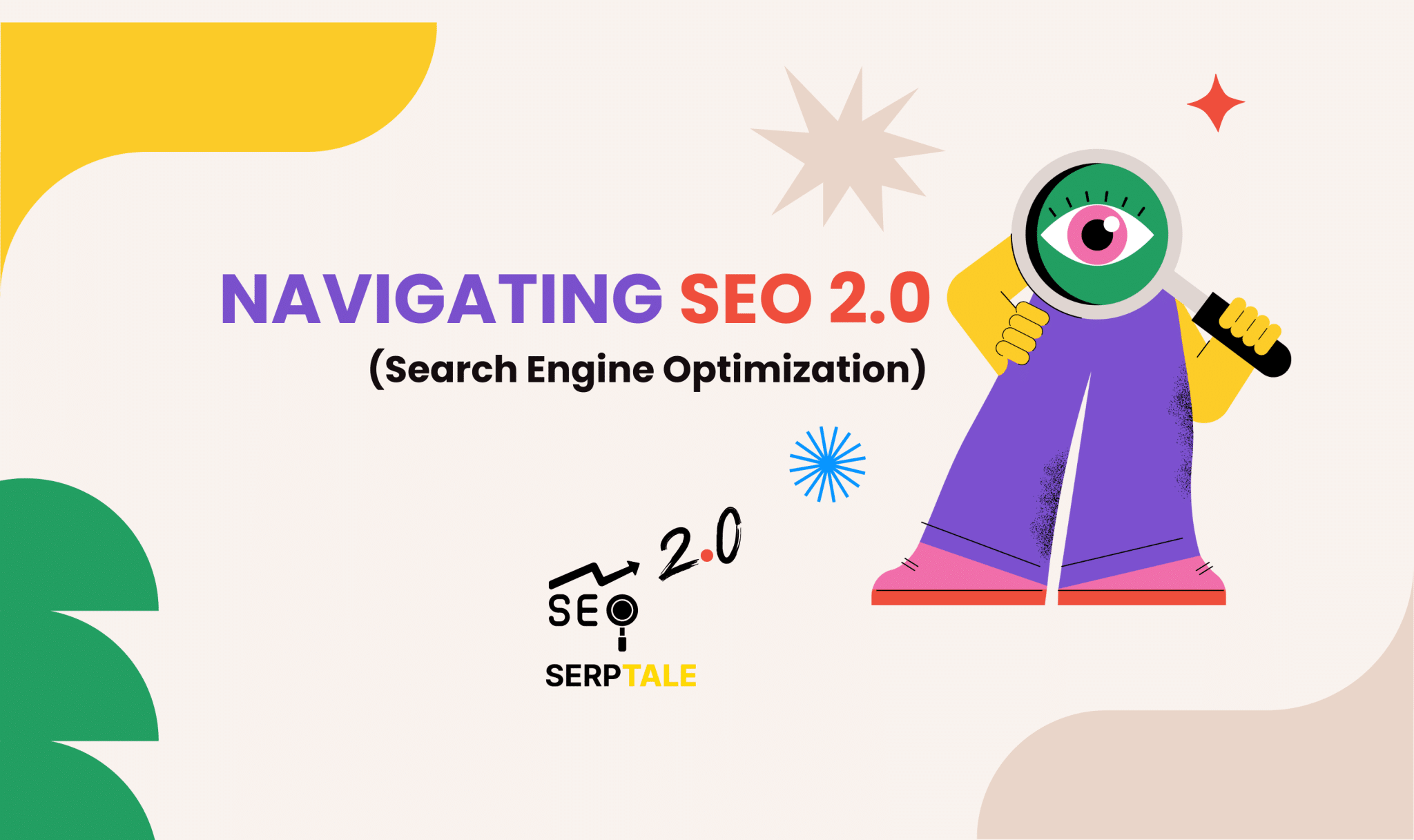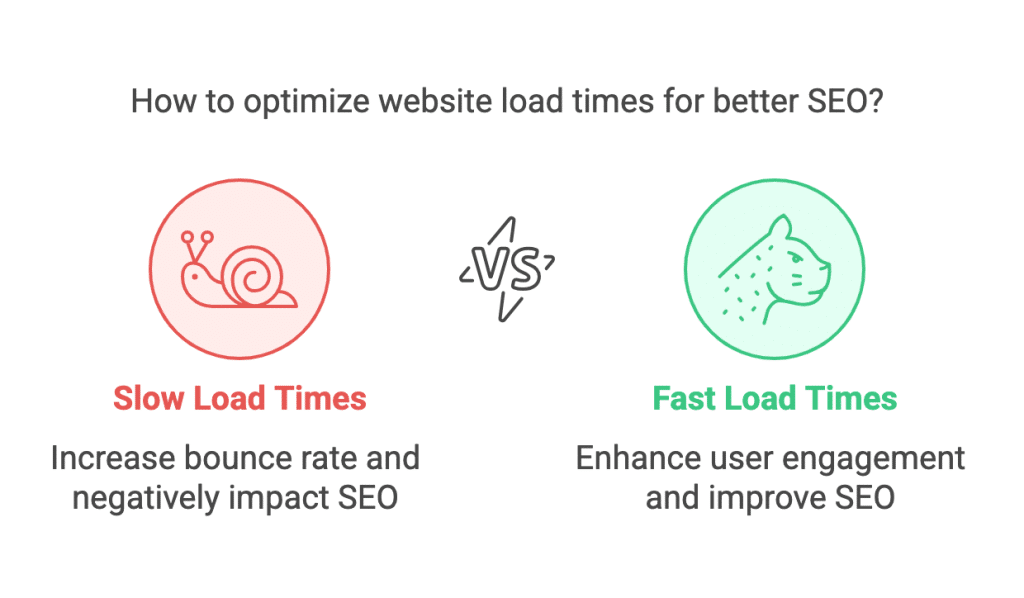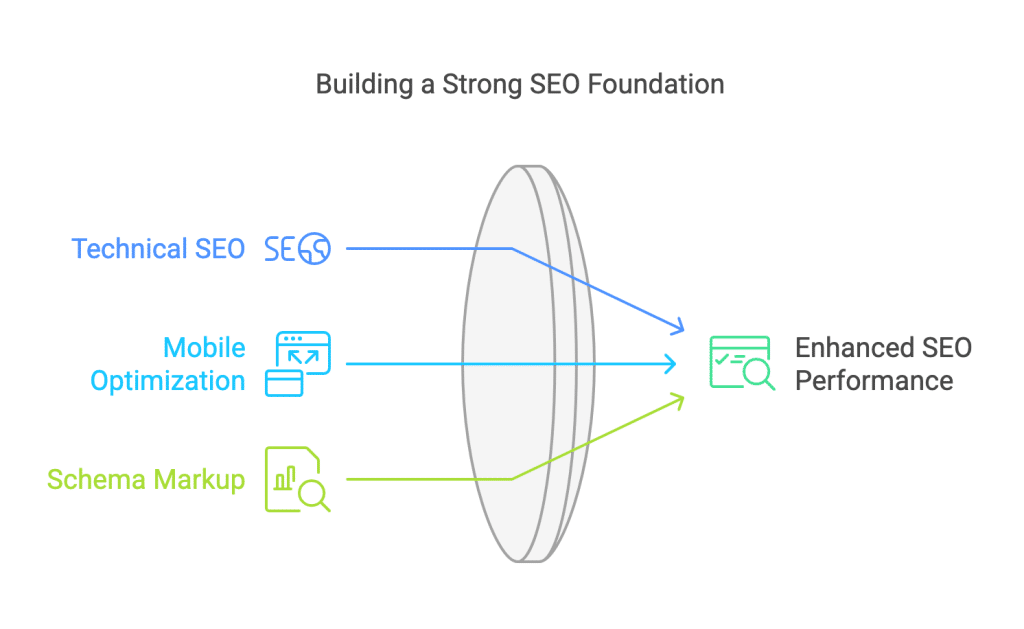
Navigating SEO 2.0: A Modern Approach to Search Engine Optimization
SEO 2.0 represents the shift from traditional SEO methods to a sophisticated, user-focused strategy. While traditional SEO focused on keyword stuffing and backlinks, SEO 2.0 prioritizes user satisfaction and experience, aligning with evolving search engines and user needs. For small businesses, choosing the right digital marketing agency is crucial. The right agency will understand SEO 2.0’s nuances, offering tailored strategies that enhance user engagement, boost rankings, and drive sustainable growth, ensuring your business stays competitive in the digital landscape.
Table of Content
A. Importance of Adapting to SEO 2.0
In today’s fast-paced digital environment, staying relevant means adapting to the changes in search algorithms and user behavior. SEO 2.0 is not just a trend but a necessity for maintaining visibility online. Adapting these modern strategies makes your content more accessible, relevant, and engaging, ultimately leading to better rankings and greater traffic.
B. Key Differences from Traditional SEO
The primary divergence between SEO 2.0 and traditional SEO lies in priorities. Traditional methods often fixed on keywords and links, while SEO 2.0 incorporates elements like user experience, content quality, social signals, and technical SEO. This modern approach reflects a broader understanding of how users interact with content and the web as a whole.

| Aspect | Traditional SEO | SEO 2.0 |
|---|---|---|
| Focus and Strategy | Emphasizes keyword optimization, meta tags, and link building | Centers around user intent, content relevance, and satisfaction |
| Content Approach | Keyword-driven content, less focus on user experience | User-centric content, tailored to meet user queries and intent |
| Link Building | Quantity-focused, mass link-building strategies | Quality-focused, natural link building through valuable content |
| User Experience (UX) | Minimal focus on UX and site performance | Strong emphasis on UX, mobile optimization, and site speed |
| Technical SEO | Basic optimizations, exact-match domains | Advanced techniques, including schema markup and voice search |
| Analytics and Adaptation | Basic metrics like rankings and traffic | Advanced metrics, fast adaptation to algorithm changes |
| Social Media Integration | Limited or no integration with social media | Active integration, recognizing social signals’ impact |
I. The Role of User Experience in SEO 2.0
A. Defining User Experience (UX)
User experience (UX) encompasses all aspects of the end-user’s interaction with a website. A good UX is essential for attracting visitors and keeping them engaged. When users find it easy to navigate your site and discover valuable content, they are more likely to stay longer and return in the future.

B. Design and Navigation
The layout and navigation of your website significantly affect user engagement. A clean and intuitive design makes it easier for users to find what they’re looking for. If visitors have to struggle to navigate your site, they might leave before they even find what they came for. Consider using straightforward menus, clear categories, and search functions to enhance the overall experience.
C. Speed and Performance
Website load times can make or break your SEO efforts. Users today expect instant access to information. If your site takes too long to load, visitors will likely leave, increasing your bounce rate and negatively impacting your rankings. Aim for a fast and responsive website to keep users happy and engaged.

II. Content Relevance and Quality in SEO 2.0
A. Understanding Search Intent
Understanding search intent means recognizing why people are searching for specific terms and what they hope to find. By aligning your content with these intents—be it informational, commercial, or navigational—you can create more relevant pieces that address users’ needs effectively.

B. Creating Valuable and Meaningful Content
Creating high-quality content goes beyond mere word count. It’s about offering real value to your audience. Use storytelling, insights, and helpful information that resonate with your readers. Engaging content keeps users on your page longer and encourages them to share it with others.
C. Content Formats and Diversity
In the age of SEO 2.0, diversity matters. Different users prefer various content formats. Incorporating videos, podcasts, infographics, and blog posts enriches the user experience and caters to different preferences. This variety can also improve your chances of being discovered by a wider audience.
III. The Significance of Social Signals

A. What are Social Signals?
Social signals refer to the interactions, shares, and engagements that content receives on social media platforms. While they are not a direct ranking factor for search engines, they can significantly influence how your content is perceived and spotted online. The more people interact with your content, the better chances it has to rank well.
B. Building an Active Online Community
Engaging with your audience helps build a sense of community around your brand. Respond to comments, ask for feedback, and create conversations on social media. This not only enhances your relationship with your followers but can also attract new users who appreciate your active presence. It’s important to build a strong online community step by step to provide the search engine a positive signal that increase credibility.
C. Measuring Social Impact on SEO
Using tools like Google Analytics or social media insights helps measure the impact of your social efforts. Track metrics like engagement rates, shares, and referral traffic to evaluate how well your social signals are performing and how they could be boosted further.
IV. Technical SEO in the Age of SEO 2.0

A. What is Technical SEO?
Technical SEO involves optimizing your website’s backend structure to improve performance and indexing. This includes site speed, indexing, mobile-friendliness, and overall site architecture. A strong technical foundation makes it easier for search engines to crawl and understand your website.
B. Mobile Optimization and Responsiveness
With the adaptive use of mobile devices, mobile optimization is crucial. A website that looks great and functions well on smartphones and tablets improves user experience and engagement. Google prioritizes mobile-friendly sites in its results, making this aspect a key component of modern SEO strategies.
C. Structured Data and Schema Markup
Implementing structured data and schema markup helps search engines understand the context of your content better. This can lead to enhanced visibility in search results and rich snippets, which can significantly improve click-through rates. By adding structured data, you’re helping search engines display your content more attractively.
V. Conclusion
As we’ve explored, SEO 2.0 is about more than just ranking; it’s about creating a richer, more relevant experience for users. Evolving with the digital landscape is vital, and by embracing user experience, quality content, social signals, and technical SEO, marketers can ensure they stay ahead in this ever-changing environment.
VI. FAQs
A. How does SEO 2.0 differ from SEO 1.0?
SEO 2.0 shifts focus from keyword density and backlinks to user experience, content quality, and social interactions.
B. What are the essential components of a successful SEO strategy in 2023?
Key components include user experience, high-quality content, social signals, and strong technical SEO practices.
C. Why is user experience critical for SEO performance?
A positive user experience keeps visitors engaged, reduces bounce rates, and encourages shares, leading to better rankings.
D. How can social signals be effectively integrated into an SEO strategy?
By creating shareable content and actively engaging with followers on social platforms, you can enhance your online presence.
E. What tools can assist with technical SEO optimization?
Tools like Google Search Console, Screaming Frog, and Moz can help identify technical issues and optimize site performance.
